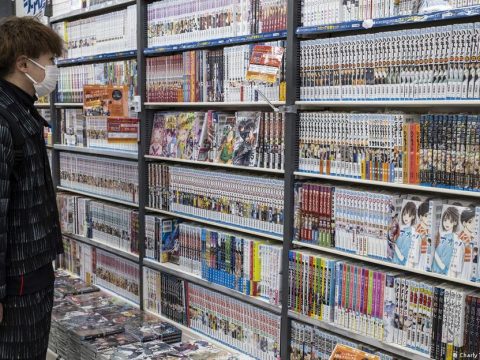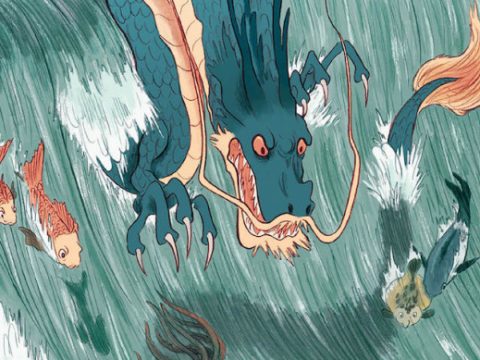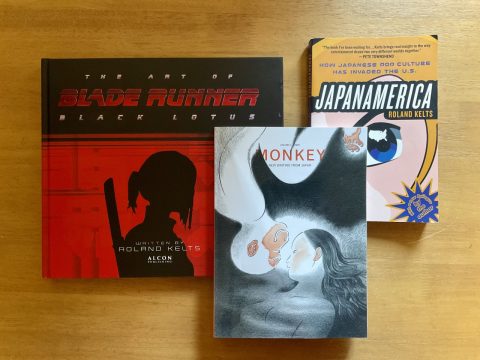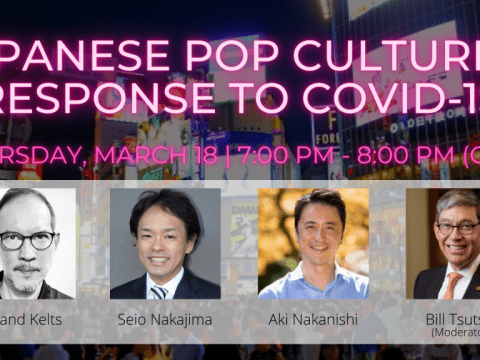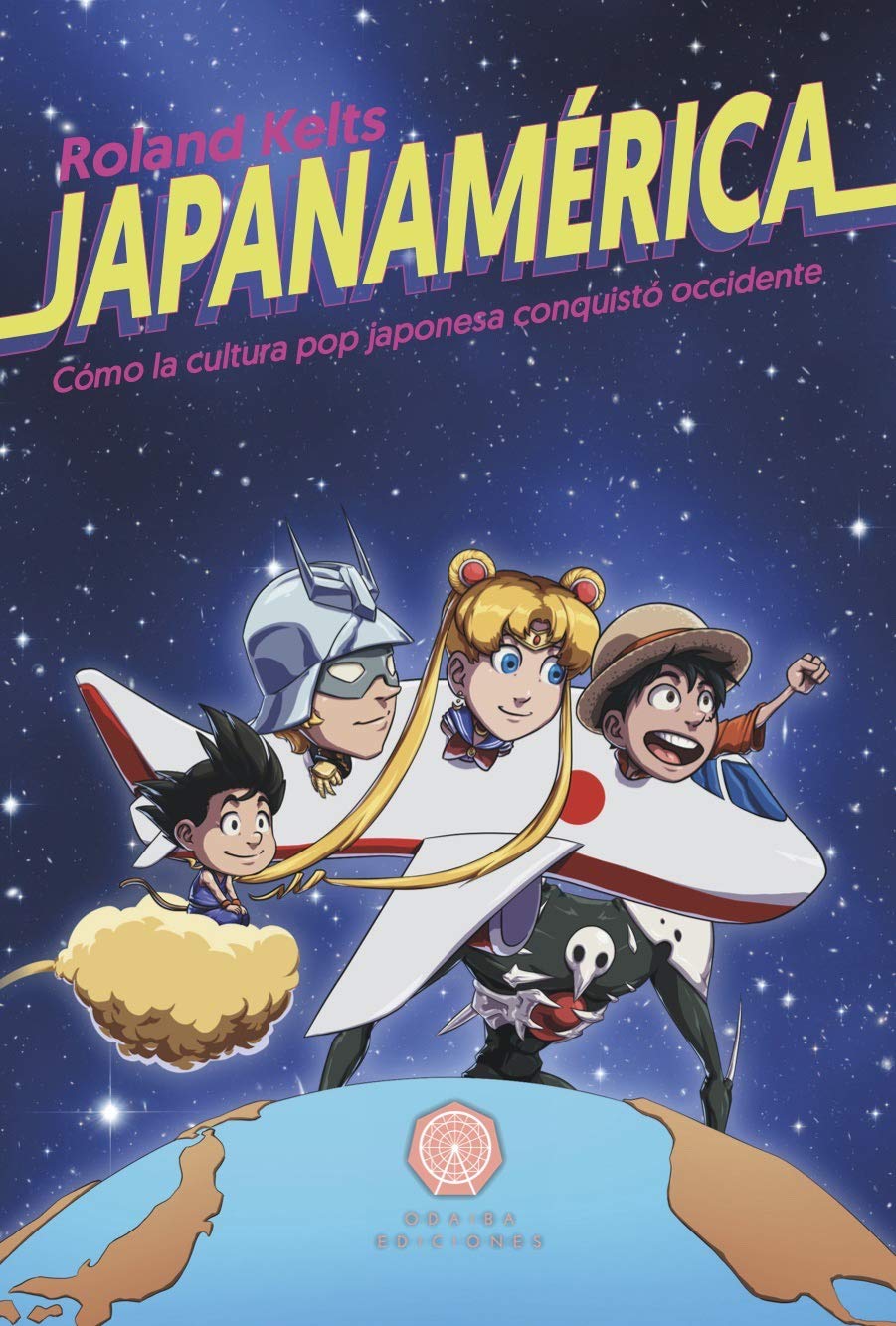 Japanese-American journalist Roland Kelts’s pioneering book Japanamerica has been translated into several languages across Asia and Europe, including Japanese. Now thanks to Odaiba Ediciones in Spain, it’s getting a new officially licensed Spanish translation. Anime and manga are very popular in Spain and throughout Latin America, but very few articles are available in English about otakudom in Spanish-speaking countries.
Japanese-American journalist Roland Kelts’s pioneering book Japanamerica has been translated into several languages across Asia and Europe, including Japanese. Now thanks to Odaiba Ediciones in Spain, it’s getting a new officially licensed Spanish translation. Anime and manga are very popular in Spain and throughout Latin America, but very few articles are available in English about otakudom in Spanish-speaking countries.
Kelts said that over the years, multiple people have come up asking him at conventions to sign the Spanish-language edition of Japanamerica. The problem is that until now, these were always pirated editions. “I used to ask, ‘Where would you get this?’” Kelts recalled. “It was usually people from Mexico, Chile, Peru or Argentina, and they just said, ‘Oh, we got this from our local bookstore.’”
“Then [in 2020], this group Odaiba Ediciones contacted me and they sounded really serious [about licensing my book],” he said. “Then I was really impressed because they contacted New York and London on their own and I got contracts from both offices. I thought, wow, they really want to publish it well and they want to promote it.”
Kelts’s editor, Samuel González, explained more about his company. “First of all, we started as a convention company. I think it was in 2014 when we first released a manga. If we had to manage all the conventions and publishing business, we could not dedicate the time needed to do it properly. So we just released two volumes and put the publishing part on hold. During this time we’ve been in quite a number of meetings in both Japan and the United States, and in one of them we met Roland Kelts. He was really nice and explained that the book was for anyone interested in Japanese culture. As we stopped having to do conventions [because of COVID], things looked as if they were going to be worse month to month. We realized we could not continue to do conventions and we had to do something else. So the first idea was to go back into publishing. We started looking for titles both in manga and books. The first name that came to us was the one from Roland.”
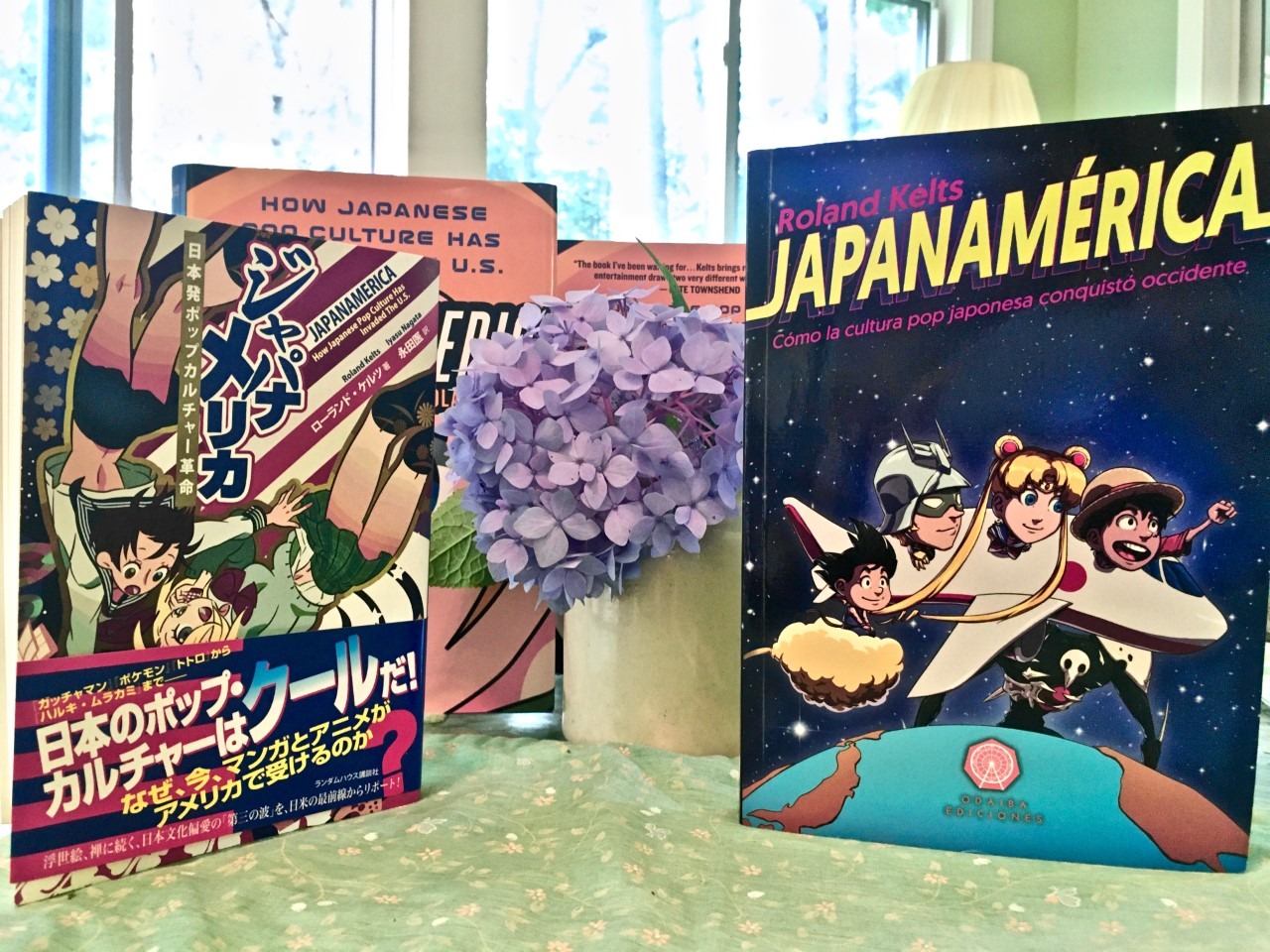
Asked why a book about Japan and America would interest readers in Spain, González said, “I think it’s the explanation Roland makes in his book about how Japanese culture went from Japan into not only North America but also the west. It’s quite similar between America and Spain because the times were approximately the same. The first anime reached the States in the late 60s and 70s. The same happened here in Spain. So I believe that Spanish fans who want to improve their knowledge of the expansion of manga and anime business all over the world will find very useful information on how it went to the United States and they can compare it to how it was in Spain.”
The first manga to be licensed in Spain was Dragon Ball, and it was thanks to efforts of publisher Montse Samon in the early 90s. “I was working in a company that was publishing American comic books in Spain. But there was not manga at all in Spain. But animation started to play on TV. There was an animation of Dragon Ball, and this animation started to change the scene of publishing as well. Frankly, we had no idea about manga, that his animation came from black and white comic books. One of these Japanese issues of Dragon Ball came to our editorial. American comic book format is all in color, then suddenly there was a small Japanese book, all black and white. The way to get in touch with the Japanese editorial was we made a photocopy of the credit page of this volume. I faxed the photocopy of the credits of Dragon Ball to the Japanese consulate in Barcelona and asked if they could help me with the Japanese publisher. They gave me the fax number.”
Licensing Dragon Ball in Spanish turned out to be a great business move. “When we got the rights for Dragon Ball in Spain, that was the first manga sold out of Asia in the whole world, aside from Akira that was being published in the States,” said Samon. “All Europe was starting a new publishing business. Once we published Dragon Ball, all the publishing companies that published comic books and entertainment books asked for a lot of rights for manga. We saw that manga were the future.”
She’s switched publishers since then, but she continues to license manga for Spanish-speaking countries. “Right now I am in charge of Latin America, Mexico, Chile, Colombia, Brazil, Argentina. Originally the manga market was divided for boys, girls and adults. We try to have a big portfolio in the three areas. But now we see, for instance in Mexico and other Latin countries, what is being successful in the States is being successful there. And right now it’s completely true that the manga is so tied to the animation. Netflix, Crunchyroll, Funimation, if any of these studios have a good series, the manga will sell for sure.”
Journalist Pedro Suarez knows both the business and otaku-side of anime and manga. “My interest was born when I was a child living in my hometown, Barranquilla, a Caribbean coastal city placed in Northern Colombia,” he said. “In the 80s, Colombian TV public broadcasting used to play some classical anime such as Mazinger Z, Astro Boy, Speed Racer, or Centella. But one of these anime series caught my attention, Space Agent Cobra (best known in Spanish as Super Agente Cobra) which was broadcasted in 1986 in my country (although the series was released in NHK between 1982 and 1983 and the movie Space Adventure Cobra was released in theaters in 1982). I was impacted all about this anime: the plot, the sci-fi futuristic space visual concept, Lady Armoroid, and himself Cobra which Buichi Terasawa made his character based on the famous French actor Jean-Paul Belmondo. Most of my current childhood friends were marked in their memories on Mazinger Z or Captain Centella, but my childhood was blown by Cobra making me keep watching and enjoying watching anime series today.”
His interest has also shaped his career, as he’s the CEO of Bunkamericas and radio producer for Bunka Radio. “Bunkamericas is the final result after years and years hardworking from Colombia,” he said. “In 2006, Duvan Prada, Jair Erazo, Michael Barrero and I established Colectivo Bunka when I used to live in Bogota. During these years, we worked together to promote in Spanish all about Japanese pop culture in three tasks: music, anime, and manga throughout conferences and ani-cons in Bogota, Cali, Ibague, and Medellin.”
He continued, “In 2010, I moved out to live in Philadelphia where I began an international process to bring out Colectivo Bunka overseas as the Spanish media outlet pioneering in Asian music and culture for Latin America. Thus, I pushed emerging Bunka Wave, a journalistic and digital content media website in Spanish to promote Asian artists from Japan, Southern Asia, South Korea, China, Taiwan, and Indonesia. Additionally, I have met a crew working specific areas to nurture the content: Duvan Prada and I working on music, films, and arts content, and Alex Morales (from Guatemala but he lives in Maryland) who is a specialist all about ani-cons, manga, anime, and cosplay topics. As a result, we were covering important events such as Anime Boston, Anime USA, Anime NYC; several music festivals such as Modern Sky Festival (Chinese music stage in New York), SXSW (Austin, TX), Japan Nite US Tour (New York and SXSW) plus several Asian concerts such as X-Japan, Dir En Grey, OKAMOTO’S, Puffy AmiYumi, and The Pillows, among others. In 2016, Colectivo Bunka changed his name to Bunka Network after we were selected as one of the Colombian delegations to represent our media and business for MICSUR (SouthAmerican Cultural Industry Market) in Bogota expanding our job to promote Latino artists and bringing a gate to connect Asian and Latinos in arts and culture. All these backgrounds have led to creating Bunkamericas as a media digital agency to connect Latin America and Asia through cultural content and arts as a real tie between two worlds to establish a dialogue moving forward our interest to promote and start a new pathway in this relationship to fulfill our mission to bring the best of both benefiting the people and fans.”
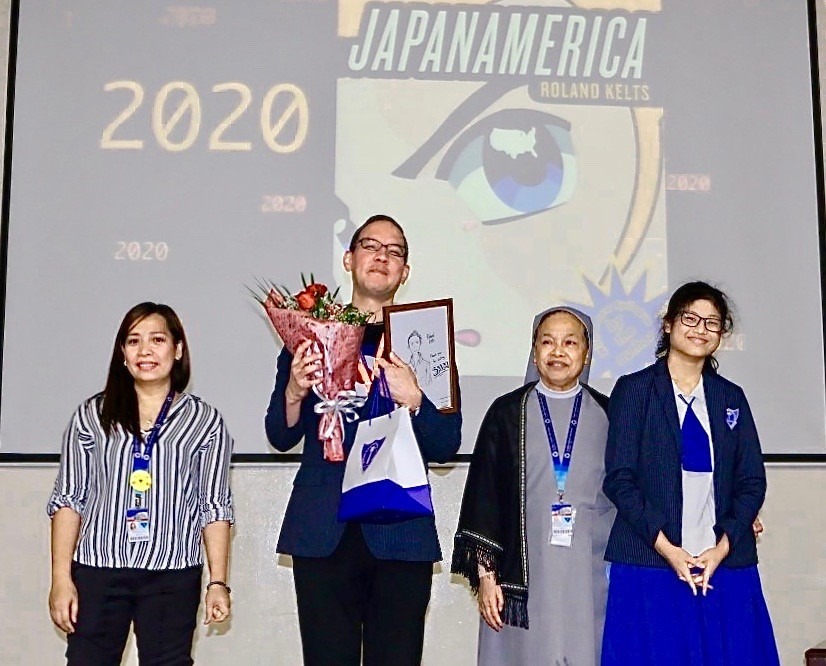
Each person interviewed was asked about the varieties of fandom, and it wasn’t always easy to pin down. “Latino fandoms are like a chameleon,” Suarez said. “You can find out more variety depending on where it’s from. For instance, several fandom groups make cosplay events or anime themed entertainment shows. The main countries in the region where fandoms are important are Brazil, Mexico, and Chile. Every fandom from these countries has been pioneers influencing the other fandom clubs across Latin America. Therefore, they follow like a ‘manual user’ to do it. Overall, Latino fandoms are always doing a lot of activities being very active in social media and presence. In this pandemic era, fandoms have been struggling to keep active in virtual mode. One example is from the Dominican Republic, in which one person is making an effort to play old and classic anime series throughout Facebook Live and he created a website based on the 90s/2000s Spanish channel Locomotion’s TV guide. Another example related is in my country. Many ani-cons in Colombia are merging in one event offering comics as well. One of the most important events is SOFA (Salon del Ocio y la Fama) made yearly in Bogota. Currently, SOFA made a big virtual event getting a reach goal of 200,000 attendance, which some of the activities were focused on comic, manga cosplay, and anime with some live-session meet and greets, and little live conferences about specific themes. Overall, Latino fandoms are doing a great job to keep actively engaging their fans in this time so I see how the region is getting relevant, [which is something] to keep in mind when any anime studio or manga publisher may consider how they can offer their products to them regardless of the language and cultural barriers. One of the marvelous insights that we are living now in a globalized world.”
“In our experience, we’ve been to conventions in Japan, France, Germany, and the United States,” said González. “We found that we have some things in common, but each country has their differences. When we went to JapanExpo in Paris, we found that the culture movement in France about manga and about comics is larger than in Spain, and it’s more common to find this culture almost everywhere.”
Conventions are starting up again, including in Spain. “After a year and a half on standby, Japan Weekend has finally returned to convention halls in Spain, with two lighter editions, Bilbao on the 3rd July and Valencia on the 10th & 11th,” González said about the anime conventions he helps hold. “Both of them required adapting and rethinking as we wanted not only to comply with the actual sanitary regulations, but to go a bit further to ensure safety. And our efforts surely paid off: they were a success, in attendance and contents, showing that conventions can slowly return to our agendas. Also, this success gives us high hopes regarding the planned conventions after Summer, with Madrid being the one we are looking for the most.”
And Odaiba Ediciones will be publishing more books in addition to Japanamerica. “Our last releases, Tokyo Super Darling and Descubriéndonos Despiertos (which has been announced to be released in English under the name My Brain Is Different) both have been very well received,” said González. “As for new releases, we have confirmed that we are currently working on several titles, covering different genres (BL, Shojo, Josei, Seinen…). We hope to unveil the names prior to our September conventions.”
Kelts has been working on more books, and should have a novel out in 2022. He’s excited about otaku fandom around the world and seeing his book come out in a new language. “When I wrote Japanamerica, there weren’t many English-language books about Japanese pop culture. But now that every fanboy has written one, this new edition solidifies the book’s legacy and enduring relevance. I feel very lucky.”
____
Danica Davidson is the author of the bestselling Manga Art for Beginners with artist Melanie Westin, and its sequel, Manga Art for Intermediates, with professional Japanese mangaka Rena Saiya. Check out her other comics and books at www.danicadavidson.com.


